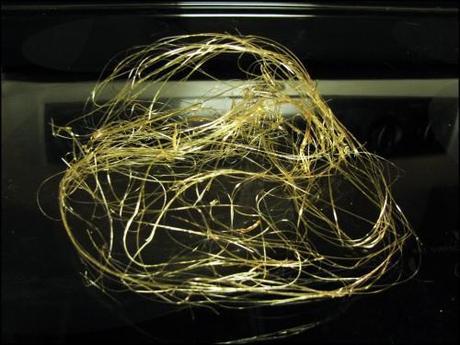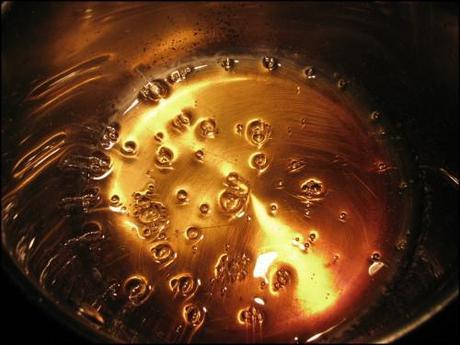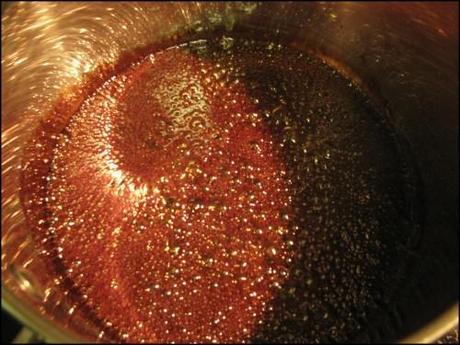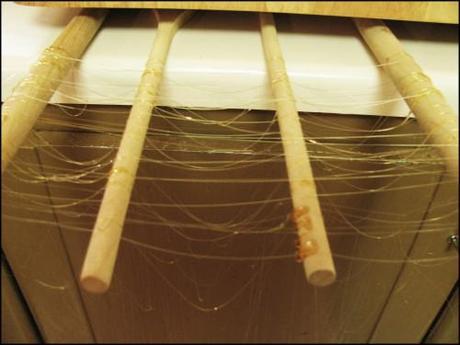I decided that I wanted something to make my cupcakes and cakes look a little different than just iced. Well, for some reason I didn’t think it would be too difficult to make spun sugar. Let me tell you, I was most definitely wrong about that. So here is my journey – hopefully you can learn from my many, many mistakes.

Final ingredients list:
1 cup of sugar
½ cup of water
Materials needed: Medium-sized saucepan, newspaper (it gets messy), spoon and/or fork, parchment paper, whatever you want to drape your spun sugar threads around – I used wooden spoons.
The basic process is fairly straightforward. Put the sugar and water in the saucepan and boil. Keep boiling until the liquid turns a pale amber color. Once it turns amber, take off heat and let cool. When it’s cool, it should thicken up to a stringy consistency. You’ll notice that when you take the spoon out of the liquid little hair-like strands will form. Now you’re ready. Hold spoon or fork 6 inches above wooden spoons and pass back and forth over them. When there’s enough strands, take them off the fork and shape as you like. Do another set of strands and shape those as well. Keep doing until you have enough or the liquid has hardened too much.
Sounds easy, right? It took me four attempts to finally get it right, and 2 more to keep testing it. I burnt it twice.

What it SHOULD look like when taken off the heat

What it looks like when it’s burnt. This happens very quickly after turning amber.
For the first attempt I had corn syrup in the pot as well. When the boiled liquid started thickening, it became very thick, very fast. All that I ended up with was sugary clumps on the spoon. On the next attempt I ditched the corn syrup and cut back on some of the sugar, but my mistake was also increasing the amount of water. It wouldn’t thicken up. Then the problem became learning when to take it off the stove so it wouldn’t burn. I still need to practice getting the strand size consistent.

Tips and Tricks (since I’m a pro now):
- I found a spoon easier than a fork to drip the strands
- Don’t get distracted. As soon as the pot starts boiling, watch it. It goes to burnt very quickly.
- When you think it’s thickened enough, wait another 30 seconds.
- There is a very short window when the sugar is at the ideal consistency. You need to be quick.
- Patience and practice go a long way.
I thought you could use the outside of a small bowl as a mold, and when the sugar dries you could take it off the outside of the bowl and have a spun sugar bowl. I still believe this works, but I could not get a consistent sized string to make this work for me.
Let me know if you try this, and how it turns out for you. I’m interested to know if anyone discovers any techniques that worked for them.
Guest blogger Andrea Santos is an Interior Decorator by day, amateur baker by night. This Torontonian believes all good things should be experienced with good food. She is the owner of I Was Here Designs in Toronto, and continues her quest to make the perfect meringue.








